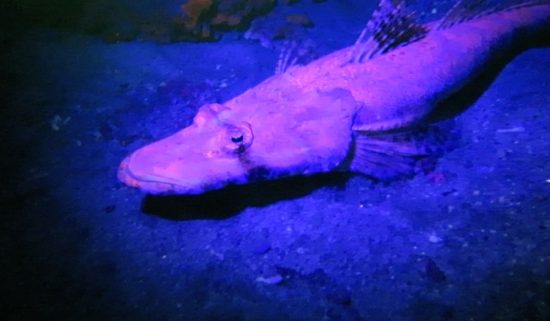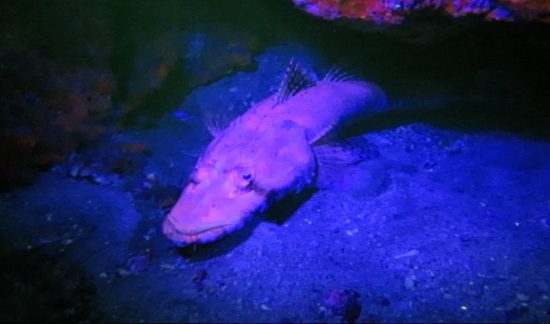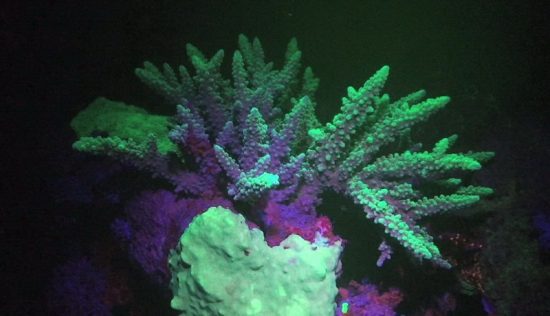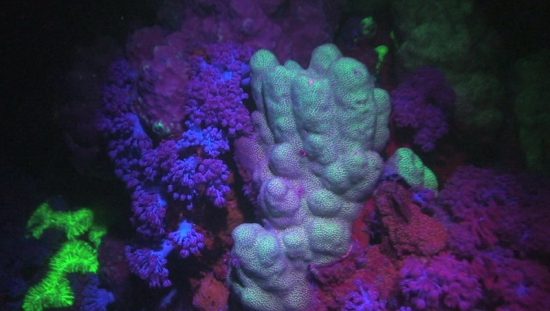





Adventures in fluo-diving in Abu Dabab
No, it wasn't the Pink Panther, but a pink flathead that was the
highlight in Abu Dabab in December 2016. Under blue light, the flathead
(platycephalidae), which is brown in daylight, appears a fluorescent
pink.
Twenty-five divers went on a total of 18 night dives with
fluorescence lighting, using a new blue light and mask filter. They
came away describing the underwater world as magical, impressive and
overwhelming.
As a biologist, videographer and diver, Prof. Dr Horst Grunz has been
diving using fluorescence lighting since 2007, having invented the
world's first HighPower underwater fluorescence torch. The technology
was intregrated into lighting manufacturer TillyTec's new Maxi Uni
series.
Dr Grunz, behind his US colleague Charles Mazel (founder of
Nightsea and consultant of Light & Motion) is the person with the
most experience in the area of underwater fluorescence.
Mazel and Grunz maintain that only by using blue light (450-465 nm) and
a built-in dichroic glass filter would there be no problems with the
resultant image.
In contrast to polyester films, this interference
filter has a high transmission rate for specific wavelengths. This
explains the sheer brilliance of the fluorescent colours. The same goes
for flashes with 5500° Kelvin, with which only the dichroic glass
filter and integrated special foil are suitable.
In contrast to
polyester films (60%), the dichroic filter and special film reduce the
intensity of the flash by just 40%.
Offered with the UV LEDs, the luminaires, with their impossibly low
prices, would prove irresistible even for beginners. These include
multi-function luminaires, which almost always do not contain royal
blue LEDs. Technically, a dichroic filter is not usable because its
blue would cover the white and red LEDs.
Another important factor for
shooting images with good fluorescence is the yellow barrier filter for
the camera and mask. That is why Horst tested numerous yellow filters
when he was in Abu Dahab.
Also, in using barrier filters (LEE, etc) for polyester films, one
would hope to photograph a beautiful picture. As such, it would be
acceptable that the filter allows a certain proportion of blue light to
pass through.
The condition of coral reefs is an important topic in fluorescence
diving. Using this fluorescence technique, analysing coral reefs is
easier than doing it during the day over large areas. This involves
checking on the distribution of individual coral species, and partial
or completely dead coral blocs. Particularly important is the
detection of tiny 1mm large coral settlers (they are considered the new
hope for the reef's regeneration), which are not visible amongst the
corals during the day. Under fluorescence, they appear as
greenish-yellow spots from several metres away.
In summary, it can be said that fluorescence dives are not only a
magical experience for scuba divers, but they are also an important
method of checking the condition of coral reefs.
To stay safe during fluorescence dives, a complete set of equipment includes:
1. Blue light lamp with royal blue LEDs (450-465 nm) and built-in dichroic filter
2. Yellow camera filter arc
3. Yellow mask filter (FlipUp filter)
4. Filter to convert white light to blue light (flash and white LEDs)
See further information here
Video
Information Abu Dabab
 Mares
Mares 10th February 2017
10th February 2017 El Malikia Resort Abu Dabbab, Egypt
El Malikia Resort Abu Dabbab, Egypt